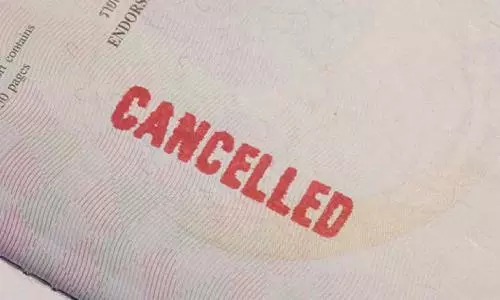
A Centre looking totally lost
text_fieldsIndia is limping back to business from the lockdown imposed due to the Covid pandemic. Domestic flighs resumed on Monday, which marked the end of two months since the prime minister declared a complete lockdown on 25 March. It has been announced that Indian Railways will resume normal service on 1 June. Buses and taxis are back on the roads in most cities.
Although these unlocking measures will help revive the Indian economy which suffered a major crash in this period, given the scale of infection there is not only no room for comfort, but there is deeper concern brewing too. Countries like America and European nations went into lockdown at a point when the pandemic had reached its zenith in its first phase. And it was when the second phase was staring at them that they started opening out of the lockdown. But in the case of India, the country was taking a pre-emptive step several strides ahead to stem the spread of the virus. It is true that as a result, India was able to suppress the spread and significantly arrest the incidence of disease and death rate. Also, in places like Kerala, where the government and the population threw all their weight with a commitment to prevent the disease, its merit has been recognised worldwide. All that said, the country is coming out of the lockdown at a time when the threat of disease spread, which has hitherto been suppressed through the lockdown, has deepened.
Apprehensions had already been raised whether India, with its move from the discipline of lockdown to the normalcy of open life, would also get to the serious phase of community transmission - which many other countries had already crossed. And that fear is corroborated by the figures of infection emerging from the small state of Kerala itself. The new figures do give a warning that things may go awry when more people reach home from other countries or states and enter daily lives. And the government, which had put the onus of disease prevention on the people, has now gone a step further and reset it as the responsibility of the individual. There is apparently an underlying concept and a governmental effort, of putting everyone's life and livelihood in his own hands and teching him the lessons of that new normal, but it remains to be seen how successful that attempt will be. The sudden spikes in rate of mortality and disease spread in Maharashtra, Gujarat and Delhi, among others, leave no room for optimism. With the country's tally having crossed 1,38,000, experts are of the opinion that there is no substance in the official claims that the virus has not so far reached a phase of community transmission. Experts also warn that India, which has come into the top ten of infected cases by now, will top the list in the number of cases between the end of June and early August.
Given such estimates, expert opinions have crystallised to the view that the lockdown was imposed prematurely, and now with the last resort already exhausted, and if the situation becomes serious again a second round of lockdown or comparable restrictions would not be easy. The lockdown was declared when the number of confirmed cases was 500 and deaths 10. The official narrative is that had lockdown not been declared then, the cases in India would have gone up to anywhere between 14 and 29 lakhs, and mortality figures would have shot up to between 37,000 and 70,000. Although such estimates would give the government some solace, the effectiveness of lockdown was reflected only in some isolated parts of the country; the disease was spreading fast in the big cities, even as per the pre-lockdown figures. In addition, the fact that the testing rate in India is far behind that of many other countries, also raises questions about the reliability of the figures. A case in point is Gujarat: when the rate of testing was boosted of late, the number of cases there had a steep rise.
The way matters move now proves that the lockdown which was declared without adequate preparations only complicated the situation. Even as guidelines are being given now for the withdrawal of the restrictions, there are no signs of the Centre having a clear roadmap about the possible crisis the country is likely to face or about ways of overcoming it. Right before the lockdown, in several countries suggestions had been made about calibrating the terms and duration of the lockdown based on the capability and opportunities of their systems. Singapore and Taiwan are among countries which followed that path. But the lockdown in India was imposed with no circumspection or adequate and precise consultation. The same lack of foresight is noticeable at this time of withdrawing the lockdown too. And no one knows where this lack of direction will lead the country.























